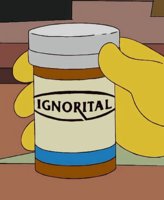Been indexing plugs since the '70s shop daze. The performance tip was just as Jack posted.
However, my indexing priorities were: Clearance, Reliability, then least was Performance. This was more or less just for survival in shop combat.
Clearance:
In those early days, bikes came with standard, non-projecting tips. We didn't fuss with indexing those. Then, projected nose plugs became the rage, and bike manufacturers were slow to okey-dokey those things, many saying "Don't doit".
Enter the owner/enthusiasts. Going by what they've heard in magazines and racing circles. They want these plugs, the plug makers wanted to sell, and we had to figure it out. Various combinations of plugs, engines, pistons, ...etc. The hot-rodded bike you just rolled up onto the lift might be running 'pop-ups' (hi-domed, high compression pistons). Some of those pistons had relief cuts for the plugs, most didn't. The risk was piston contact with the ground electrode, or worse, the projected nose center electrode. Especially with some of those really projected plugs, like the Champion 'N' series. So, the best starting position for the plug was to get clearance, get the ground electrode away from the piston. Essentially putting the plug gap downward. You're not getting paid extra for this, it's expected as part of a normal tune-up.
Reliability:
Now enter the over-enthusiastic enthusiasts (purposely being kind here). They have engines burning a little oil, sometimes fouling plugs. BUT, don't want an overhaul. "Gimme a tune-up and fancy plugs, it'll be fine". With these, have the gap pointed toward the intake valve, so that the incoming air/fuel charge could wash the offending oil off of the plug nose. Plus, it helped cool the plug when these guys would do the "Hey ya'll, watch this" routines on the hot summers.
Given the above, the best position, just to get the bike out the door, was to put the gap somewhere between down (toward the piston), and toward the intake valve. Facing the left cylinder of your XS650, that would have the gap between 3-O'clock and 6-O'clock.
Performance:
The racing circles and mag pubs of the time advocated having the gap pointing toward the intake valve, as Jack stated above. Putting the gap in the 'clearance' and 'reliability' zone was considered "good 'nuff".
I mark my plugs like 5Twins posted above, marking a line on the plug inline with the gap.
Then get the mark (gap) somewhere in that 3-6 O'clock zone.
I have a variety of shims to accomplish this, but would rather not use them, or use the thinnest possible. Prefer to choose from a group of plugs, finding the best alignment. In the bike shop environment, having a box of plugs to choose from made this easy. Now, I'll usually buy several plugs just to find that sweet combo.
Performance, part deux:
Now, fast-forward to today, with new-fangled combustion analyzers and see-thru engines. And, discussions on flame kernel shielding, shrouding, quenching. Gets complicated. Some say point the gap up, avoiding shrouding by the piston, and quenching by the piston motion. Well, with a 40° BTDC ignition on our XS650s, the piston is about 10mm away from its full TDC position. Not much shrouding there. The quench (flame blow-out) can also be complicated, since you'd need to know (or control) the swirl pattern and direction.
Also, gotta watch discussions and their relevance to our plug placement and combustion chamber shape. Wedge with side plug, pentroof with top plug, hemi with top or side plug, ...etc.
For short-term track/strip/offroad, I like the touted advantages of the "side-gapping".
http://www.xs650.com/threads/e3-spark-plugs.36815/page-3#post-466440
http://performanceunlimited.com/documents/plugsidegapping.html
 RT
RT